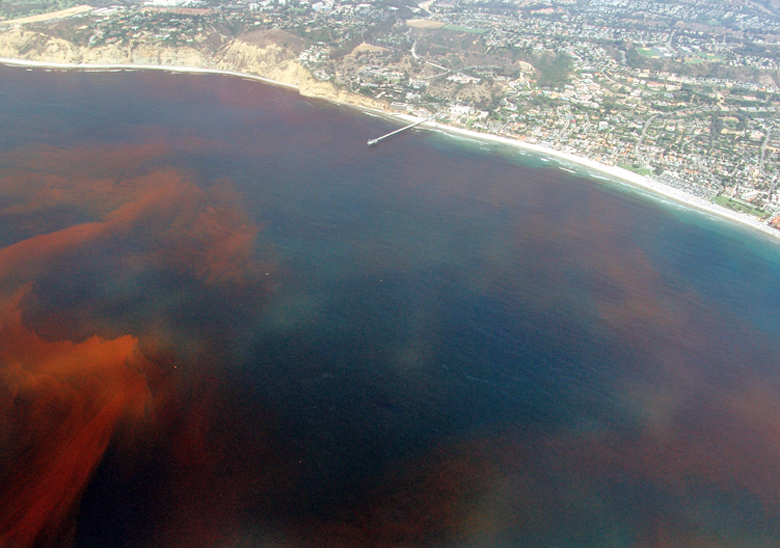
A Mild Case of Red Tide in the Bay Area Seems To Have Come and Gone
Red tide, an algae bloom that last year killed thousands of fish in the Bay Area, briefly returned to local waters — especially in the East Bay — but appears to have passed.
“The red tide that gave East Bay waters a light-brown sheen earlier this month is likely over, declared the environmental watchdog group San Francisco Baykeeper Monday,” KQED reported. “I would say this bloom is done for now,” a Baykeeper scientist said of the short case of red tide. “Almost overnight, the bloom died and the water was crystal clear.”
Because red tide is believed to occur with warm water, Baykeeper said that another bloom is possible before cooler fall and winter weather prevails.

In early August, citizen scientists near Berkeley Marina identified discolored water. “Various groups collect[ed] samples and had them analyzed,” according to the Los Angeles Times. Tests found that the microorganism/alga — Heterosigma akashiwo, which produces the telltale rust-colored water, and can wreak havoc on marine life — was found in the waters off Emeryville and the Berkeley Marina. “There were also reports of discolored water in the Richardson Bay and Muir Beach, but it hasn’t been confirmed that it was caused by the same organism,” the Times said.
We windsurf at least a few times a week at Point Isabel, just a few miles north of Berkeley Marina. We asked a few of the locals if they were concerned about red tide.
“Nope,” was the universal, unelaborated-upon response.
The waters of Point Isabel have actually been uncharacteristically blue and greenish in late July and August, as opposed to the prevailing “chocolate-latte” brown that most of us come to expect from the Bay. Every year, including during last year’s deadly bloom, we dunk our heads in the water at least several times a session — we have no symptoms to report, other than persistent aging and rashes of mediocrity.
While red tide killed an enormous number of fish last year, as well as rays and crabs, the effect on humans is thought to be minimal. “Algae isn’t known to be toxic to humans, but could result in eye and skin irritation; experts recommend people and pets stay away from any rust-colored water,” the Times said.
This year fewer than a hundred fish appear to have been killed by red tide. “I am so happy it’s only 85 fish and I am glad it didn’t spread to the South Bay,” the head of Baykeeper said. According to the L.A. Times, red tide algae blooms produce a toxin that is deadly to fish and other marine animals. “As the bloom spreads, bacteria in the water consumes the algae. The process depletes the water of oxygen, resulting in the fish suffocating and dying off.”
While scientists admit that they’re still learning about Heterosigma akashiwo, Baykeeper said that red tide blooms are likely to become the “new normal.”
“These algae are just waiting to go nuts.”
